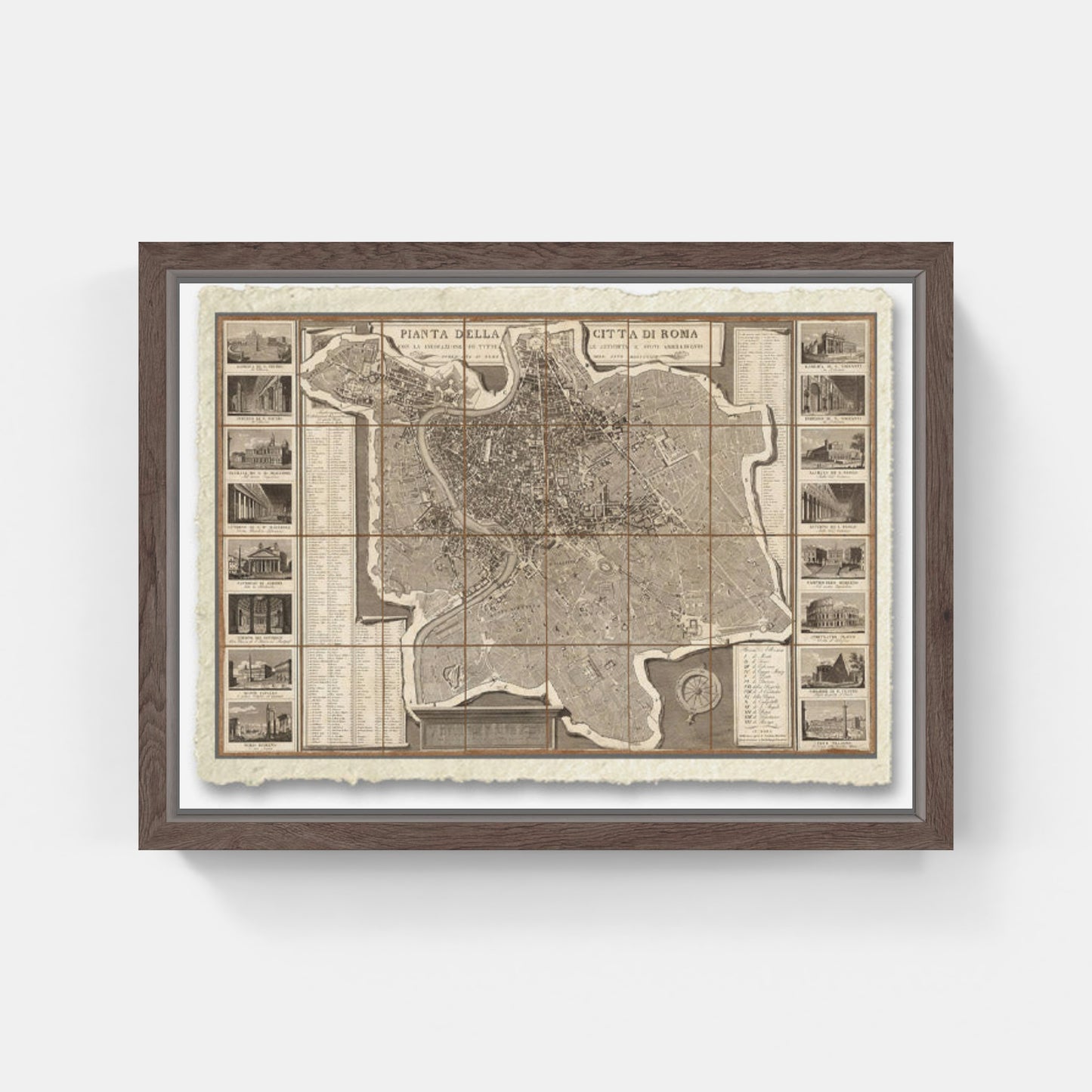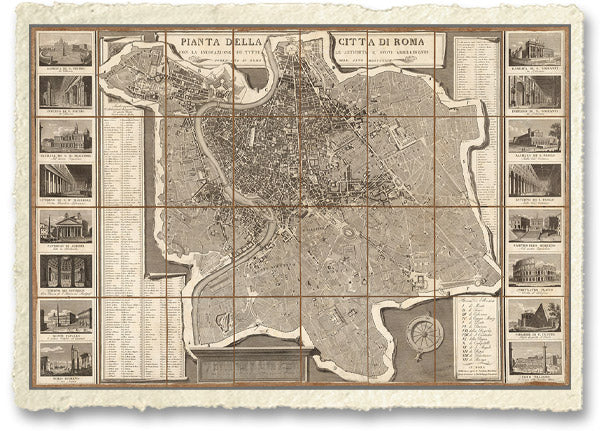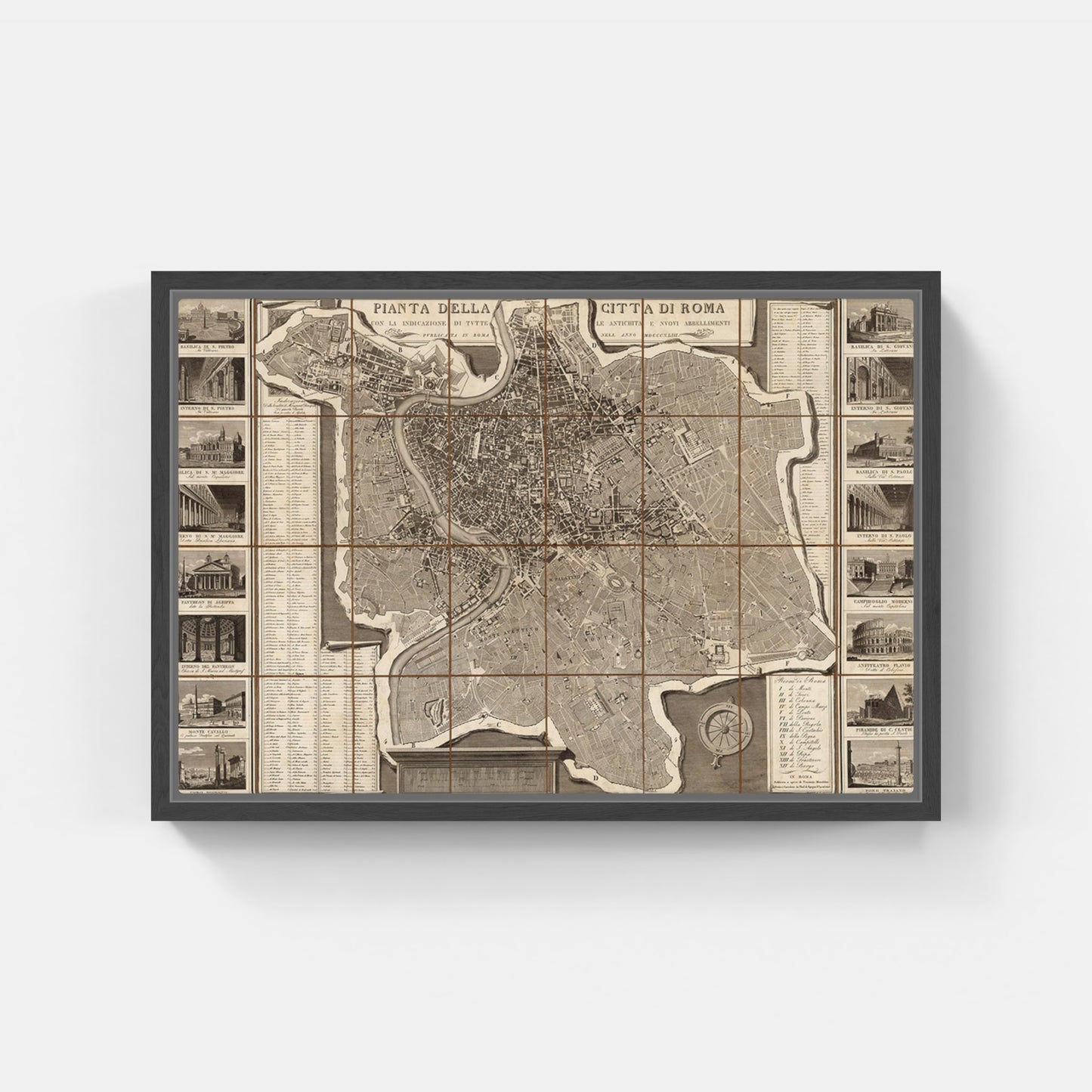Plan of the City of Rome by Pietro Ruga
Plan of the City of Rome by Pietro Ruga
Couldn't load pickup availability
SKU:MBRV8SXGKC52N
BUY ONLINE, INSURED TRACEABLE DELIVERY
Unique quality material
Print on handmade paper from Amalfi
Measurement : 29 x 42 cm
Material : work printed on very fine handmade Amalfi paper with fringed edges
Frame : Handmade light brown beech wood
Pictorial canvas
Measurement : 100 x 75 cm
Material : work printed on very fine grain pictorial canvas
Frame : Light brown in beech wood and handmade wood pulp
YOU WANT A CUSTOMIZED PRODUCT
OR INFORMATION? WRITE TO US
The work
Pietro Ruga has created a detailed map of Rome, enriched on the sides by 16 cartoons showing important places and buildings in the city, including Agrippa's Pantheon, Trajan's Column, the Pyramid of Cestius and the Colosseum. In the lower right corner, there is a legend indicating the 14 neighborhoods of the city. The map has a particular label from the English library of M. Piale, located in Piazza di Spagna in Rome.
An interesting detail is that this map belonged to Nicolas Charles Oudinot, 1st Count Oudinot, 1st Duke of Reggio (1767-1848), a Marshal of France. Oudinot was known for his tenacity in battle, so much so that he was wounded 34 times during his military career.
Born without a nobility that would allow him a rapid rise, Oudinot joined the army and his life changed with the outbreak of the French Revolution in 1792. He was elected lieutenant colonel of the third battalion of the Meuse volunteers. After distinguishing himself in Belgium, he was promoted general in June 1794 after the Battle of Kaiserslautern.
He fought on several fronts, including the German and Swiss ones, as general of division and chief of staff of André Massena. During the Battle of Monzambano he distinguished himself so much that Napoleon himself gave him a sword of honor, subsequently becoming a member of the Legion of Honour.
Napoleon further rewarded him with a Grand Cross of the Legion of Honor and during the Napoleonic Wars, Oudinot continued to distinguish himself. He was elected a member of the Chamber of Deputies, commanded a company of grenadiers and fought in battles from Vienna to Poland. In 1808, he was appointed governor of Erfurt and count of the French Empire. After the Battle of Wagram in 1809, he was appointed Marshal of France, the country's highest military distinction.
Oudinot continued to serve as an administrator in Holland and the Russian countryside. After the fall of Napoleon, he remained faithful to the Bourbon Restoration and to the king, receiving the title of peer of the kingdom. He participated in the French invasion of Spain in 1823 and then devoted himself to political and administrative roles until his death, which occurred while he was governor of the Invalids, the veterans' hospital in Paris.
How reproductions are made






Scopri i pregiati materiali di Trizio Editore
Carta di Amalfi fatta a mano, cornice in legno di faggio e vetro museale. Guarda i particolari dei prodotti che renderanno la tua casa più elegante e preziosa.




